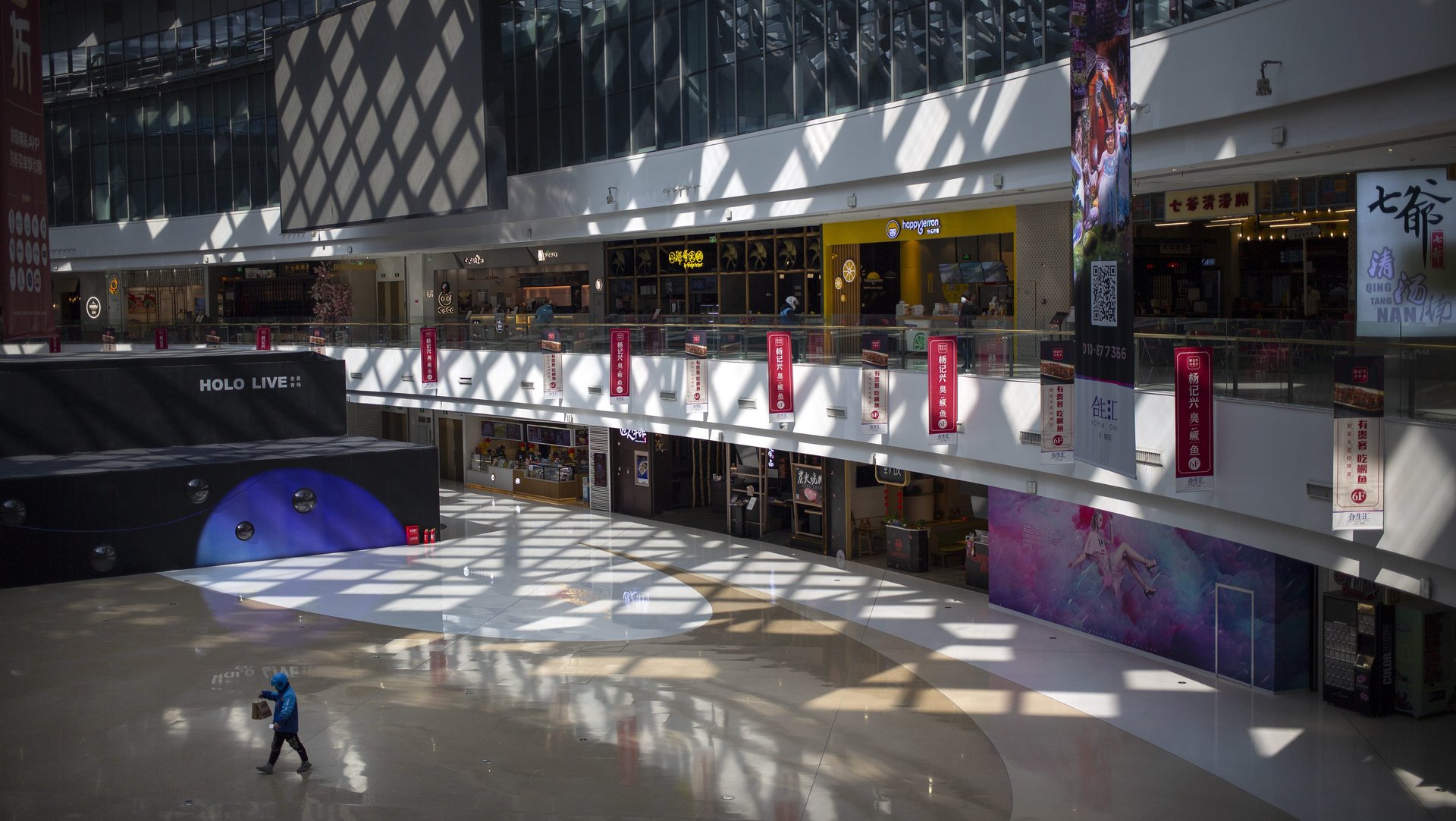Even once Covid-19 is under control, stores may think twice about reopening right away
Around the US, stores selling non-essential goods are suffering. With stores closed and shoppers staying home due to Covid-19, retail traffic has all but vanished. Many companies have taken to cost-saving measures such as furloughing staff.


Around the US, stores selling non-essential goods are suffering. With stores closed and shoppers staying home due to Covid-19, retail traffic has all but vanished. Many companies have taken to cost-saving measures such as furloughing staff.
Once the crisis subsides, their temptation may be to reopen their shops as quickly as possible. But early indications from China, which is now opening up again after being the first country to enforce shutdowns to halt the virus, suggest some retailers may want to be patient.
Though China’s outbreak appears under control, shoppers in the country have been slow to resume their normal spending. Many are cutting out “trivial” purchases, so even as stores have reopened, shoppers may not be visiting.
Suning.com, a Nanjing-headquartered electronics retailer, told Nikkei a number of its stores were seeing only half the normal number of customers. A worker at a Shanghai Walmart noted similar declines.
In its latest quarterly report (pdf), released April 3, H&M included a week-by-week rundown of its recent performance in China. Its store closures peaked at 64% of stores in China shuttered. Sales at that point had dropped 89% versus the previous year. As H&M opened more stores, sales improved, but very slowly.
The situation means retailers reopening stores have to weigh the potential sales benefit against the costs of keeping stores open, which can be high. ”Understandably retailers will be keen to reopen stores to clear seasonal stock and recover lost revenue, but the impact to profitability by opening these stores too early could be severe,” Honor Strachan, principal analyst at GlobalData, a data and analytics company, wrote in an emailed April 9 report on H&M’s results.
In markets such as the UK where the government has offered support to retailers and furloughed workers, GlobalData said “it may be in the retailer’s interest to keep staff out of work until consumer willingness to spend on non-essentials returns and footfall picks up.”
Some retail in China is seeing customers come back. At luxury stores, unlike at many other non-essential retailers, shoppers have been returning faster than expected, according to management consulting firm Bain & Co. But the firm has forecast a slower recovery for luxury in the Americas and Europe. GlobalData also pointed out that Chinese shoppers’ “propensity to spend is significantly higher than in mature retail markets such as the US and much of western Europe,” and expects retail traffic will take longer to return in those areas.
While one survey of Americans found many say they’re eager to go back to stores, whether they actually do in large numbers once shops around the country open for business again may depend on how the current crisis ends. A vaccine might give shoppers confidence, but without it, they could continue to feel wary, not to mention that an impending recession will likely limit consumer spending.
Business and store traffic aren’t likely to return overnight. Retailers may need to plan accordingly.